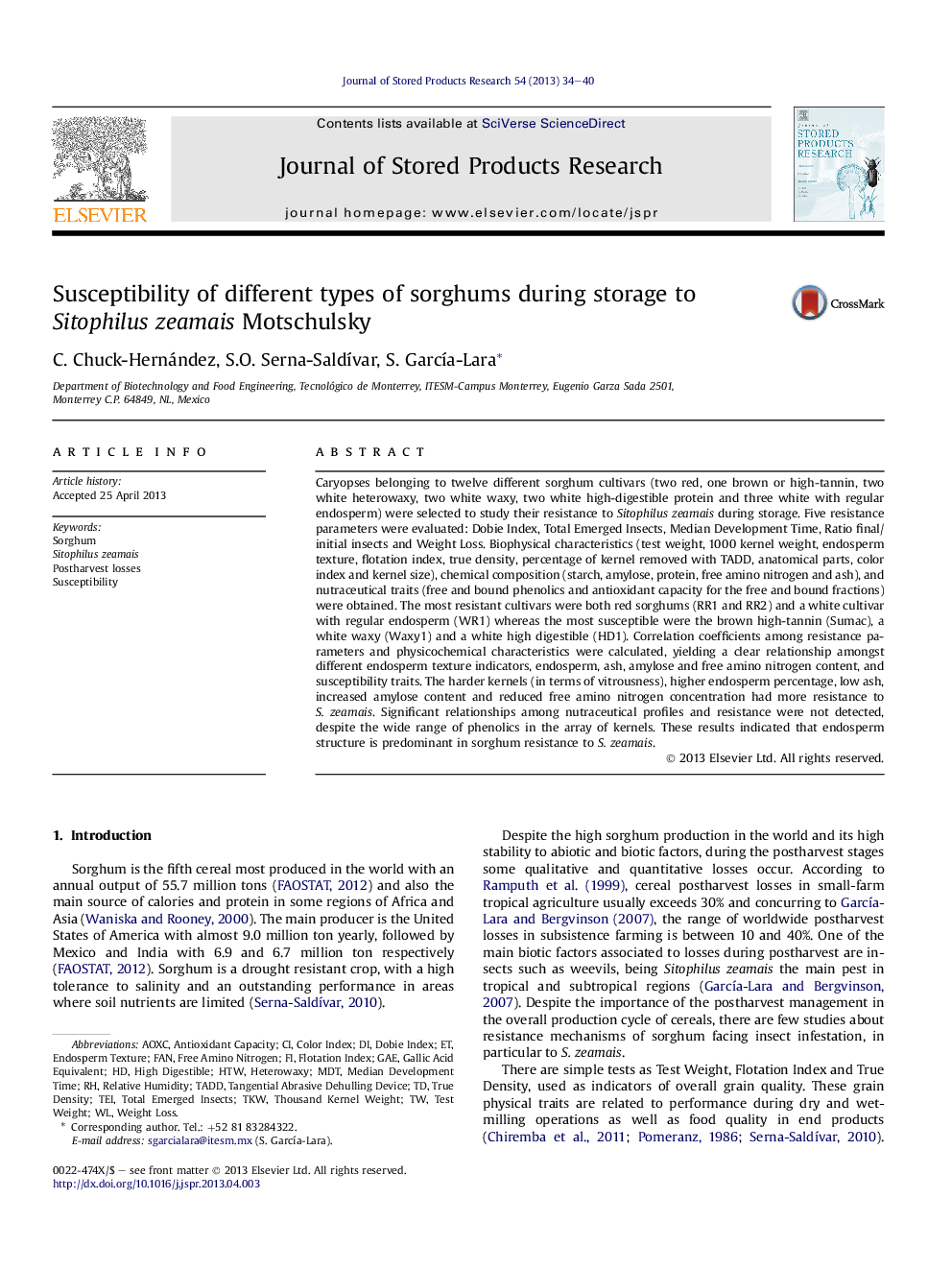| Article ID | Journal | Published Year | Pages | File Type |
|---|---|---|---|---|
| 4517103 | Journal of Stored Products Research | 2013 | 7 Pages |
•Storage tests for twelve sorghum cultivars infested with Sitophilus zeamais were performed.•Physical, chemical and nutraceutical characteristics of these sorghums were obtained.•Susceptibility to S. zeamais was highly correlated with endosperm percentage and texture.•Large and harder kernels were the less susceptible to maize weevil.•Significant relationship between phenolics and susceptibility was not detected.
Caryopses belonging to twelve different sorghum cultivars (two red, one brown or high-tannin, two white heterowaxy, two white waxy, two white high-digestible protein and three white with regular endosperm) were selected to study their resistance to Sitophilus zeamais during storage. Five resistance parameters were evaluated: Dobie Index, Total Emerged Insects, Median Development Time, Ratio final/initial insects and Weight Loss. Biophysical characteristics (test weight, 1000 kernel weight, endosperm texture, flotation index, true density, percentage of kernel removed with TADD, anatomical parts, color index and kernel size), chemical composition (starch, amylose, protein, free amino nitrogen and ash), and nutraceutical traits (free and bound phenolics and antioxidant capacity for the free and bound fractions) were obtained. The most resistant cultivars were both red sorghums (RR1 and RR2) and a white cultivar with regular endosperm (WR1) whereas the most susceptible were the brown high-tannin (Sumac), a white waxy (Waxy1) and a white high digestible (HD1). Correlation coefficients among resistance parameters and physicochemical characteristics were calculated, yielding a clear relationship amongst different endosperm texture indicators, endosperm, ash, amylose and free amino nitrogen content, and susceptibility traits. The harder kernels (in terms of vitrousness), higher endosperm percentage, low ash, increased amylose content and reduced free amino nitrogen concentration had more resistance to S. zeamais. Significant relationships among nutraceutical profiles and resistance were not detected, despite the wide range of phenolics in the array of kernels. These results indicated that endosperm structure is predominant in sorghum resistance to S. zeamais.
